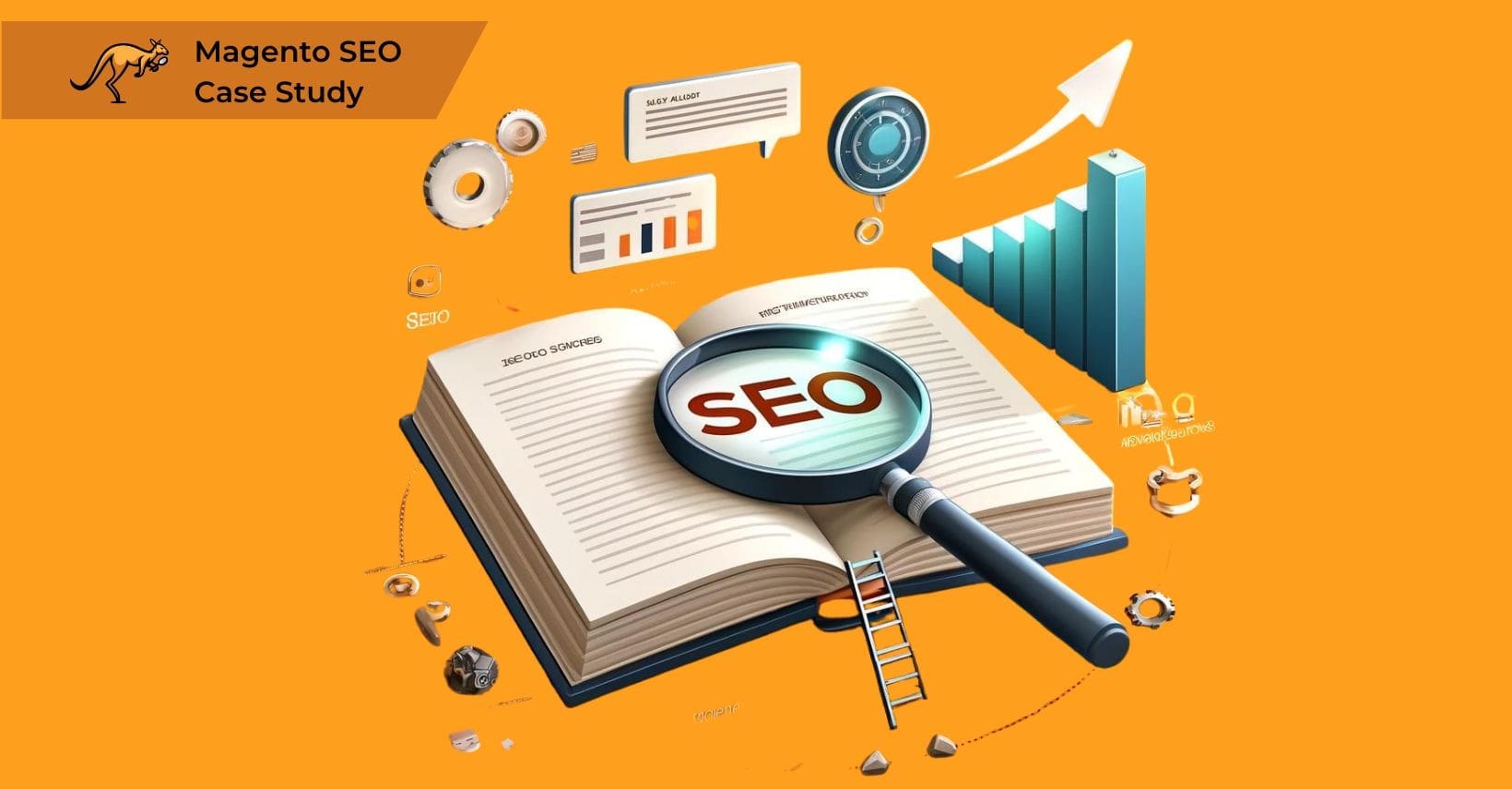This is a case study of a worldwide business hiring me to oversee the SEO optimization of their ecommerce store on Magento. As a major retail brand with a sizable online presence, a smooth move with no organic traffic loss was vital to the client.
Magento SEO audits prevent disturbances to your connection with search engines, which otherwise pose significant ranking risks during website updates. The higher the size and complexity of the Magento website, the greater the danger of organic ranking instability without proper pre-migration assessment.
This Magento optimization was a fantastic success. We’ll go over some of the most important points in this Magento SEO case study below, such as why it’s critical to understand the current state of SEO on the migrating site, why careful preparation of information architecture is nearly as important as active redirects, and why proper planning is critical.
By the end, you will be able to see how effective our team was at driving new traffic and revenue to the web page in question.
While this case study focuses on a retail client, the methods outlined here are adaptable to various sectors, including sports and informational websites.
This adaptability underlines our approach’s versatility, ensuring that our SEO strategies are designed to meet diverse needs no matter the industry. This leads us into the initial stage of our process, the Magento SEO Audit, where we begin with thorough preparations to set the foundation for successful SEO enhancement.
Preparations: the Magento SEO Audit

We like to start with a straightforward SEO audit. Through years of experience with SEO audit management and the Magento platform, we have built up enough expert knowledge to adjust these procedures to the individual demands of each shop.
In general, Magento SEO audits examine multiple technical aspects to ensure that:
- The indexation of URL parameters has no effect on SEO value.
- There is no duplicate material on the site, such as duplicate pages.
- There is no vital metadata missing.
- The site structure supports proper crawling and indexing.
- Page speed and mobile responsiveness meet current standards.
Magento SEO audits examine technical elements including URL structure, canonical tags, robots.txt configuration, XML sitemaps, schema markup, internal linking patterns, and page load speed, which collectively determine search engine crawlability and ranking potential.
Magento SEO audits require access to Google and Bing webmaster tools, the live website’s FTP credentials, and backend admin access, which enable thorough examination of all technical aspects and performance metrics.
Without access to this data, it would be hard to conduct a thorough website audit and identify serious concerns. Magento SEO audit preparation requires gathering analytics data, documenting current site structure, and compiling keyword performance metrics at the beginning of the process, which establishes baseline measurements before starting any migration work.
In the case of this particular case study, the brand was huge enough that we needed to perform an comprehensive check before we could get started working on the optimization strategy.
Magento SEO audits prevent loss of organic traffic by establishing detailed baseline performance metrics for each page, which allows for comparison after migration to identify and address any ranking drops quickly. This detailed understanding protects revenue streams that depend on search visibility.
This comprehensive assessment laid the groundwork for the detailed planning necessary for the Magento SEO audit.
As we delve into the next phase, we outline the detailed Steps in Preparations, providing a structured approach to safeguard and enhance site performance throughout the audit process.
Step 1: Information Architecture Planning
Information architecture planning forms a critical component of Magento SEO audits, which establishes logical site structure, user-friendly navigation paths, and proper URL hierarchy that search engines can efficiently crawl and understand.
It is reasonable to concentrate on redirects, but if your new site’s information architecture is bad or drastically different from your previous site, the impact of your high-quality redirects will be diminished.
If your redirects are sending your customers to useless URLs like product pages that do not exist, they are not going to be any help for traffic, no matter how well-managed they are!
Step 2: Data Analysis
Data analysis during Magento SEO audits reveals critical search patterns, which in this case showed that most Google searches targeted specific product versions by year and model. This analytical data informs site structure decisions and content prioritization strategies.
When users looked for any version of commercial products in this category, the client needed to be visible at the top of the rankings for relevant keywords.
This meant that we had to make sure that each version had landing pages that were fully crawlable and indexable.
However, we did not intend to develop a landing page for every possible combination of these multiple product variations because it would clog the site with massive volumes of near-identical material.
There would be no point in having so many pages created in order to attract only a little more revenue. There had to be a more elegant way of dealing with this problem that could provide improvement with more focus.
We designed an information architecture based on keyword research data and user journey analysis. The website structure included landing pages for the most important product combinations in the category.
We also needed to design an internal co-linking structure that would allow users to go to any of these sites and URLs in a logical and seamless manner.
Step 3: Redirects
As with any website transfer, redirects were of vital importance to the project’s eventual results. However, this was a massive site with constant content creation.
That meant many thousands of constantly changing product and category pages where things were routinely launched, updated, or withdrawn. All of these made URL redirection mapping an unusually complex part of the SEO project.
Remember that the primary reason for a reduction in rankings following a transfer is the interruption created by moving to a new website.
Google must follow your redirection, crawl your new sites, and reprocess all ranking signals in order to determine where your new URLs should rank.
Magento SEO audits manage redirects through specialized SEO tools that map all existing URLs to their new destinations, which preserves link equity and prevents 404 errors during migration. These redirect mapping processes document each URL relationship throughout the migration.
Step 4: Waiting
After completing a Magento SEO case study, the critical phase of anticipation begins as we await search engine spiders to index the newly optimized pages.
This period is pivotal as it sets the stage for potential surges in organic traffic, which is important for all types of websites, from sports blogs to retail platforms. Each page’s snippets, created during the SEO process, are vital in attracting visitors and enhancing site visibility.
As these changes take effect, patience is required to see the fruits of detailed SEO labor—increased sales and traffic spikes on optimized pages. This waiting period, though often a test of patience, culminates in measurable shifts in site performance, leading us to examine the outcomes and insights from the impact of Magento SEO.
Outcomes and Insights: The Impact of Magento SEO

Magento SEO audit results typically become visible within 2-3 months after implementation completion, which allows search engines sufficient time to recrawl and reindex the optimized site structure. This case study demonstrates that patience during this indexing period yields clear performance improvements.
The client’s sales have continued to be strong, with improved positioning in the rankings pages for their chosen keywords.
Magento SEO audit implementations deliver measurable outcomes including significant rises in organic traffic across all page types, which this case study demonstrated for both category pages and product pages. These traffic improvements translate directly to increased sales and stronger keyword rankings.





